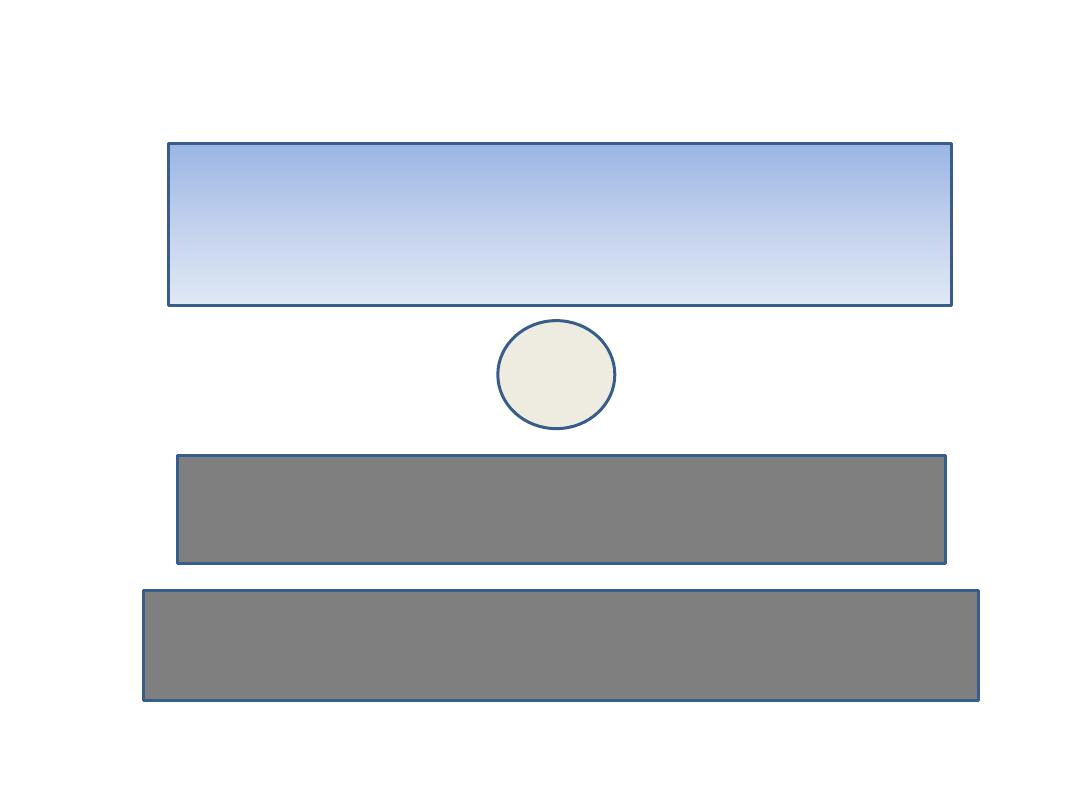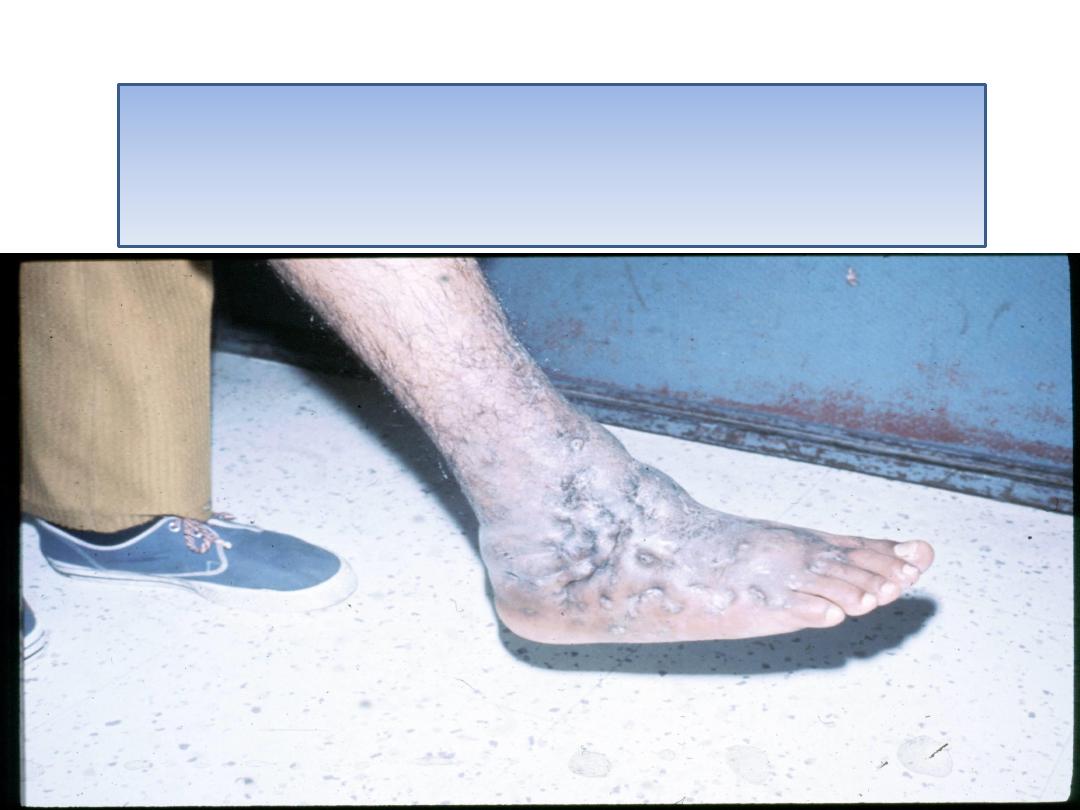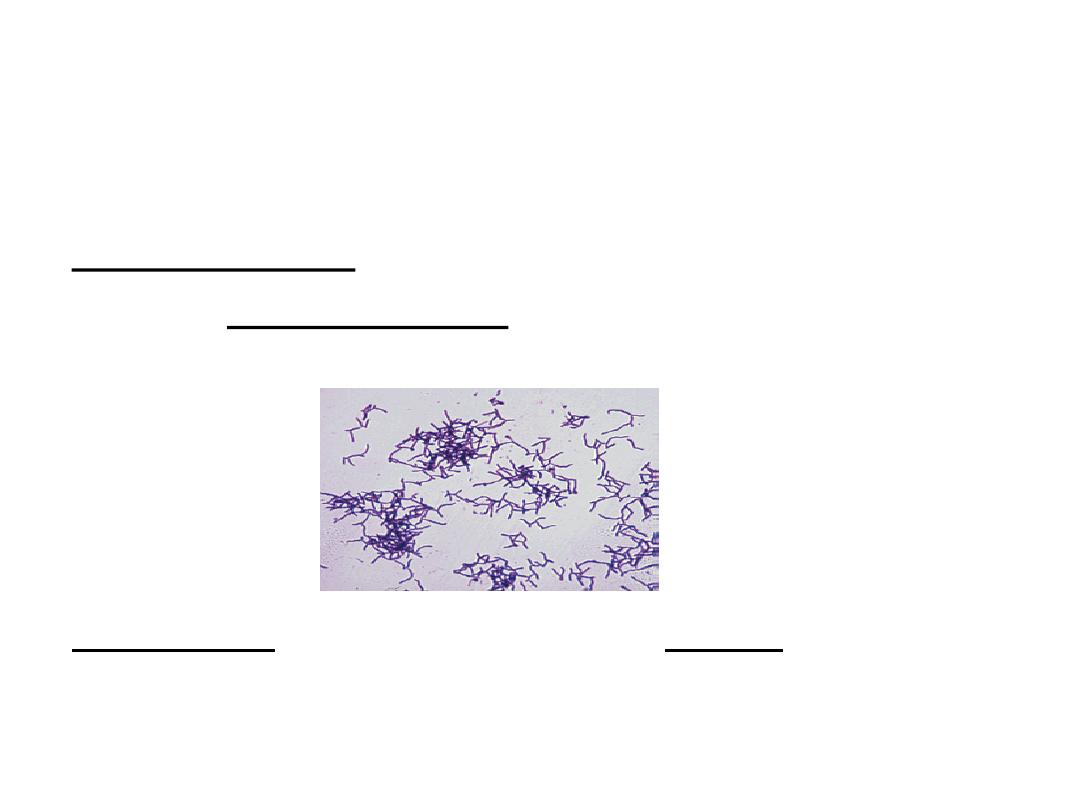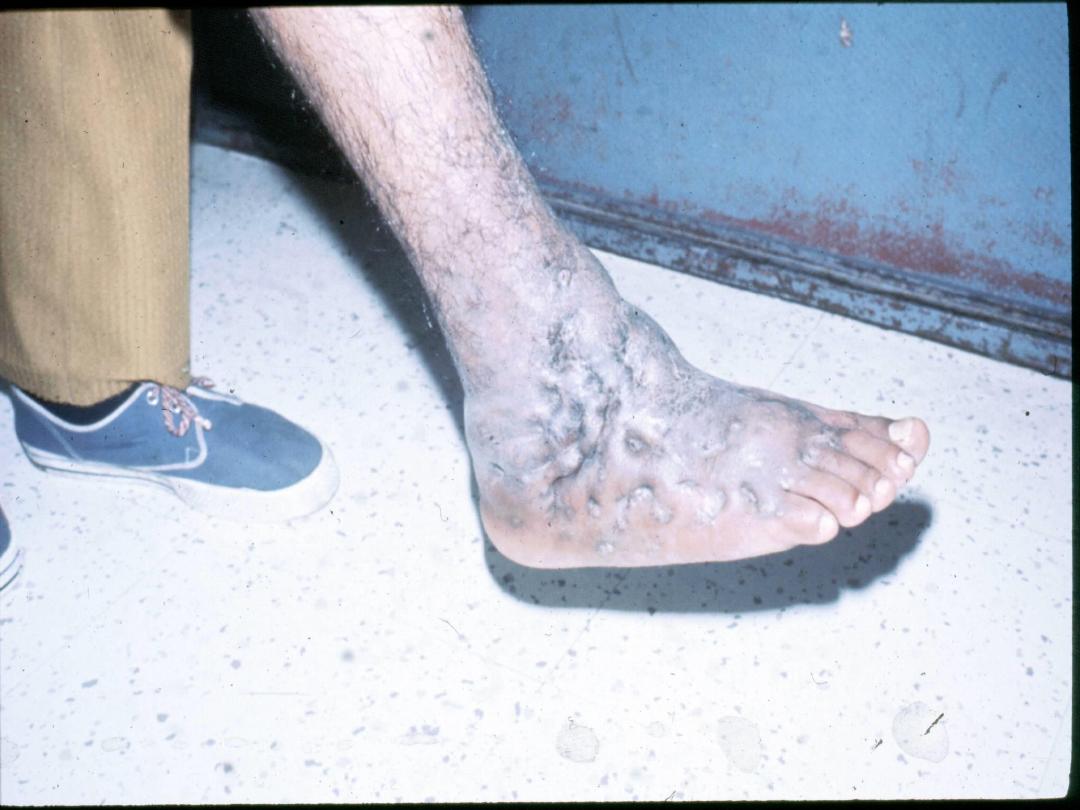
SUBCUTANEOUS MYCOSES
By
Dr. Mohammed H. Mushrif
Lecturer of Medical Mycology

Mycetoma
(Madura foot)

Types of mycetoma
Mycetma has two types:
1) Actinomycotic (bacterial): caused by species of
aerobic actinomycetes which are Actinomadura
madurae, Nocardia brasiliensis and Streptomyces
somaliensis.
2) Eumycotic (fungal): caused by molds such as
Madurella mycetomatis.

Pathogenesis & Clinical picture
Mycetoma develops after traumatic inoculation
with soil contaminated with the causative organism.
Mycetoma usually involves the lower limbs.
It is common in bare footed persons.
The disease is characterized by suppuration,
formation of multiple sinuses that drain pus
containing granules.
The disease may extend to the adjacent muscles
and bones leading to their destruction.


Laboratory diagnosis
Laboratory diagnosis is important to identify the
type of mycetoma.
because the actinomycotic mycetoma is treated by
antibiotics such as streptomycin and trimethoprim-
sulfamethoxazole.
while eumycotic mycetoma is resistant to
antibiotics and need surgical interference up to
amputation + prolonged therapy by antifungal
drugs.

1) Macroscopic examination of granules: yellow
granules occur with actinomycetes while black and
white granules occur with fungi.
2) Microscopic examination of crushed granules will
show: Gram positive filamentous branching
bacteria in actinomycotic type and true septate
hyphae in eumycotic type.
3) Cultivation of the granules on blood agar
incubated aerobically and anaerobically for
isolating actinomycetes and SDA incubated at
room temperature for isolating molds.
